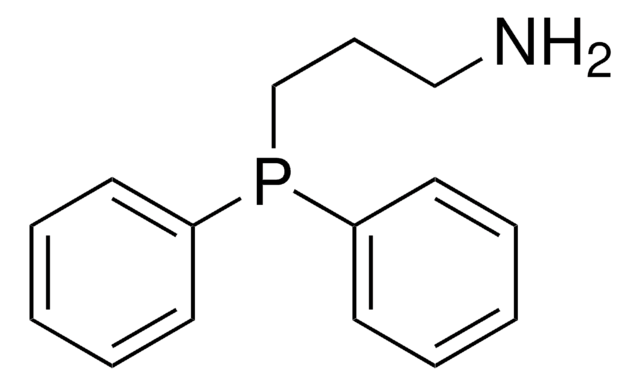52411
Heptafluorobutyric acid
suitable for ion chromatography, ≥99.5% (GC)
Sinónimos:
Edman Reagent No. 3, HFBA, Perfluorobutyric acid
About This Item
Productos recomendados
vapor density
7 (vs air)
Quality Level
vapor pressure
~10 mmHg ( 25 °C)
description
anionic
assay
≥99.5% (GC)
form
liquid
shelf life
limited shelf life, expiry date on the label
technique(s)
ion chromatography: suitable
refractive index
n20/D 1.3 (lit.)
bp
120 °C/755 mmHg (lit.)
density
1.645 g/mL at 25 °C (lit.)
cation traces
Al: ≤0.5 mg/kg
Ba: ≤0.01 mg/kg
Bi: ≤0.01 mg/kg
Ca: ≤2 mg/kg
Cd: ≤0.01 mg/kg
Co: ≤0.01 mg/kg
Cr: ≤0.01 mg/kg
Cu: ≤0.01 mg/kg
Fe: ≤0.1 mg/kg
K: ≤0.5 mg/kg
Li: ≤0.01 mg/kg
Mg: ≤1 mg/kg
Mn: ≤0.01 mg/kg
Mo: ≤0.01 mg/kg
Na: ≤3 mg/kg
Ni: ≤0.01 mg/kg
Pb: ≤0.01 mg/kg
Sr: ≤0.01 mg/kg
Zn: ≤0.05 mg/kg
SMILES string
OC(=O)C(F)(F)C(F)(F)C(F)(F)F
InChI
1S/C4HF7O2/c5-2(6,1(12)13)3(7,8)4(9,10)11/h(H,12,13)
InChI key
YPJUNDFVDDCYIH-UHFFFAOYSA-N
¿Está buscando productos similares? Visita Guía de comparación de productos
Application
Linkage
related product
signalword
Danger
hcodes
Hazard Classifications
Skin Corr. 1A
Storage Class
8A - Combustible corrosive hazardous materials
wgk_germany
WGK 3
flash_point_f
Not applicable
flash_point_c
Not applicable
ppe
Faceshields, Gloves, Goggles, type ABEK (EN14387) respirator filter
Elija entre una de las versiones más recientes:
¿Ya tiene este producto?
Encuentre la documentación para los productos que ha comprado recientemente en la Biblioteca de documentos.
Los clientes también vieron
Artículos
LC/LC-MS method identifies 8 aminoglycosides in pork using Discovery® DSC-18 SPE and Ascentis® Express C18 UHPLC, per Chinese standards.
Nuestro equipo de científicos tiene experiencia en todas las áreas de investigación: Ciencias de la vida, Ciencia de los materiales, Síntesis química, Cromatografía, Analítica y muchas otras.
Póngase en contacto con el Servicio técnico












